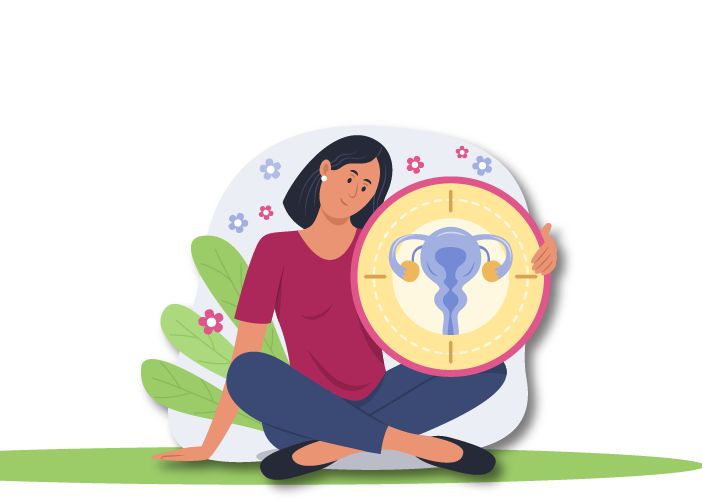Women have the unique experience of menstruation. But it’s a problem, that they are taught that their periods will be painful, embarrassing, and inconvenient from a young age, and it’s a normal sign. But you know what this doesn’t have to be the case.
A healthy menstrual cycle devoid of excessive pain indicates that your body is in good working order. It gives important information about our hormones and body health.
So, how does a healthy cycle appear? What are the symptoms of an unbalanced body? And how can we reclaim our authority? Continue reading for an Ayurvedic take on menstruation.
The Ayurvedic perspective on menstruation
- Menstruation is a normal bodily function that safeguards the reproductive organs. Each month, menstruating blood flows freely and does not clot. It helps cleanse the uterus, cervix, and vagina.
- Menstrual blood, or rajah, is a by-product of rasa dhatu, according to Ayurveda. What and how we eat has an impact on our rasa.
- Menstrual blood is bright red in color during a healthy cycle, and bleeding lasts about 5 days. It has no off-putting odor, and the quantity is just right. However, if you experience pain, mood swings, heavy bleeding, or any other additional symptoms, then these are indications of dosha imbalance.
- Unbalances in the Doshas, the mind-body energies that control everything can cause variations. Vata, Pitta, and Kapha are the Doshas that characterize the forces of nature both within and outside our bodies and our genetic makeup. It is in our best interests to make lifestyle choices that maintain them in balance.
How Doshas Affect Your Menstrual cycle
Any dosha imbalances will show up in our cycles, which are a window into your entire state of equilibrium. Poor food, lack of adequate sleep, and physical or emotional stress are all elements that can impact persons of all doshas.
Varied periods of the cycle have different doshic features and a different tendency for imbalances depending on an individual’s dosha. The three Dosha are:-
1. Vata Dosha:-
A Vata cycle is usually on the lighter side in terms of flow. Blood can be a darker reddish-brown or even black color. Around this period, Vata imbalances can cause anxiety, difficulty sleeping, and constipation, you may also have low back and hip pain.
Tips to reduce Vata menstrual symptoms:
- To maintain their equilibrium, you should eat soft, warming, and grounding foods with good fats. You should stay away from coffee and eat food slowly.
- Instead of intense exercise, do restful yoga during this period.
- Massage the lower belly with warm castor or sesame oil, or do a full-body self-massage.
2. Pitta Dosha:-
A pitta cycle is characterized by increased bleeding and a sense of warmth. You may be irritable or angry. Swelling, increased body temperature, headache, sore breasts, acne, nausea, vomiting, and diarrhea are all common side effects of aggravated Pitta.
Tips to reduce Pitta menstrual symptoms:
- Maintain a Pitta-balancing diet and lifestyle throughout the month, emphasizing dry, and cool meals.
- Cooling beverages, such as coconut water or fresh fruit juices, should be consumed.
3. Kapha Dosha:-
Excess bloating and a heavy feeling are signs of a Kapha cycle. Menstrual blood may be thicker and more susceptible to yeast infections and itching. Leading up to the cycle, you may endure depression.
Tips to reduce Kapha menstrual symptoms:
- Stick to a Kapha-balancing diet for the entire month, focusing on lighter meals and digestive spices.
- Exercise regularly to keep the Kapha Dosha balanced.
Many women struggle with irregular menstruation, relying on a restricted set of tools but here Ayurveda comes to the rescue. Whether it’s managing menstrual disorders or adopting a healthy lifestyle to ease menstrual irregularities, Ayurveda plays a significant role.




